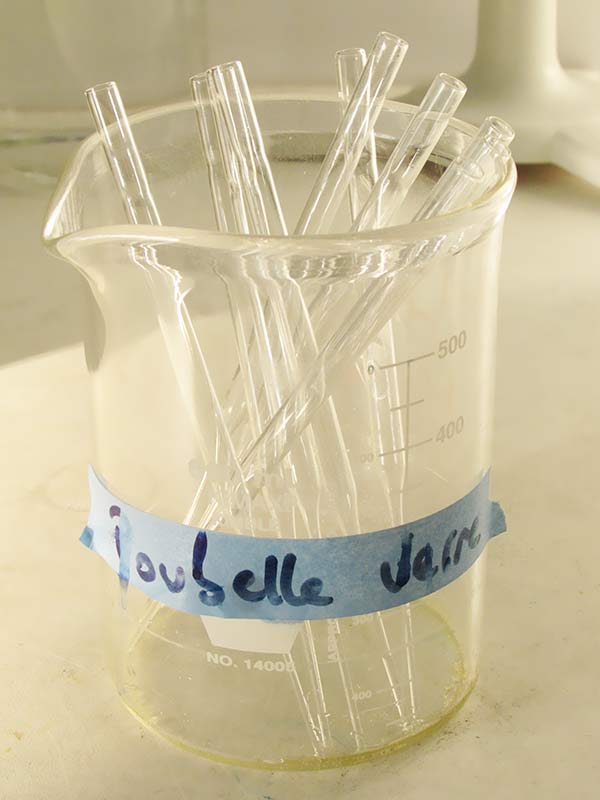Handling dangerous chemicals
Solid waste
Laboratory experiments generate solid waste in addition to liquid waste. This solid waste is comprised of all single-use or broken material. Two major criteria will determine the way in which solid waste is sorted and disposed of in a laboratory:
- Is the solid pointed or sharp?
- Has the solid been soiled by chemicals (organic solvents, acids, toxic chemicals, etc.)?
Based on the answers to these two questions, you will be able to decide on the right bucket for disposal of the solid waste. Most of the buckets available for laboratory waste are for soiled solids and can collect soiled or unsoiled solids as required.
Never store a chemical for a long time in unsuitable storage areas (cupboard, under the bench)!POINTED AND/OR SHARP SOILED WASTE
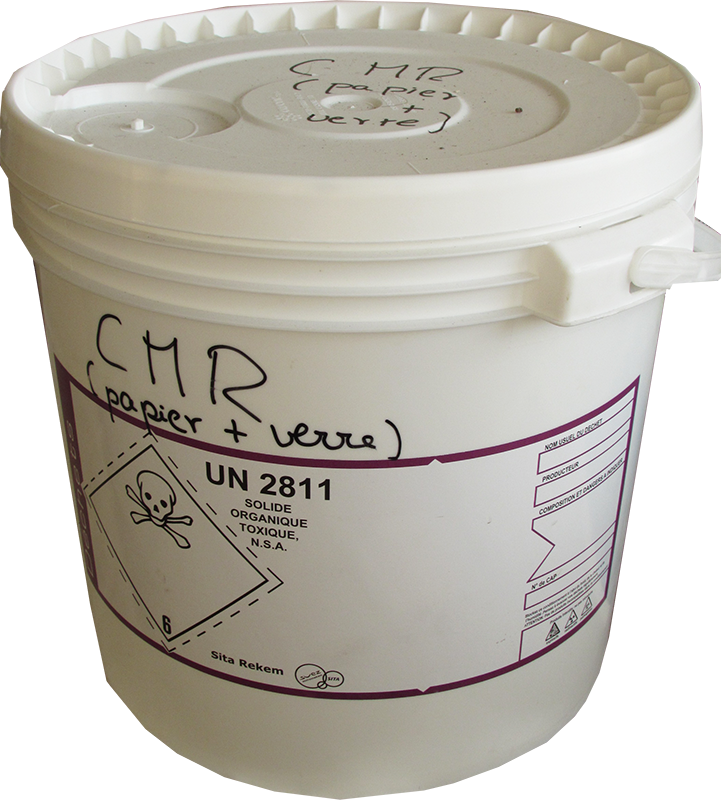
What I must put into the container:
Soiled glass waste (Pasteur pipettes, broken glass)
Pointed and sharp plastic waste (pipette tips)
What I can put into the container:
Unsoiled sharp and/or pointed glass waste
Unsoiled sharp and/or pointed plastic waste (pipette tips)
What I must not put into the container:
Liquid waste or solid waste containing liquid
Soiled glass waste (Pasteur pipettes, broken glass)
Pointed and sharp plastic waste (pipette tips)
What I can put into the container:
Unsoiled sharp and/or pointed glass waste
Unsoiled sharp and/or pointed plastic waste (pipette tips)
What I must not put into the container:
Liquid waste or solid waste containing liquid
SOILED WASTE THAT IS NEITHER POINTED NOR SHARP

What I must put into the container:
Soiled gloves
Soiled paper waste (paper towels)
Soiled plastic waste that is neither pointed nor sharp (test tubes)
What I must not put into the container:
Soiled glass waste (Pasteur pipettes, broken glass)
Pointed and sharp soiled plastic waste (pipette tips)
Liquid waste or solid waste containing liquid
Gloves
Soiled gloves
Soiled paper waste (paper towels)
Soiled plastic waste that is neither pointed nor sharp (test tubes)
What I must not put into the container:
Soiled glass waste (Pasteur pipettes, broken glass)
Pointed and sharp soiled plastic waste (pipette tips)
Liquid waste or solid waste containing liquid
Gloves
UNSOILED LABORATORY WASTE
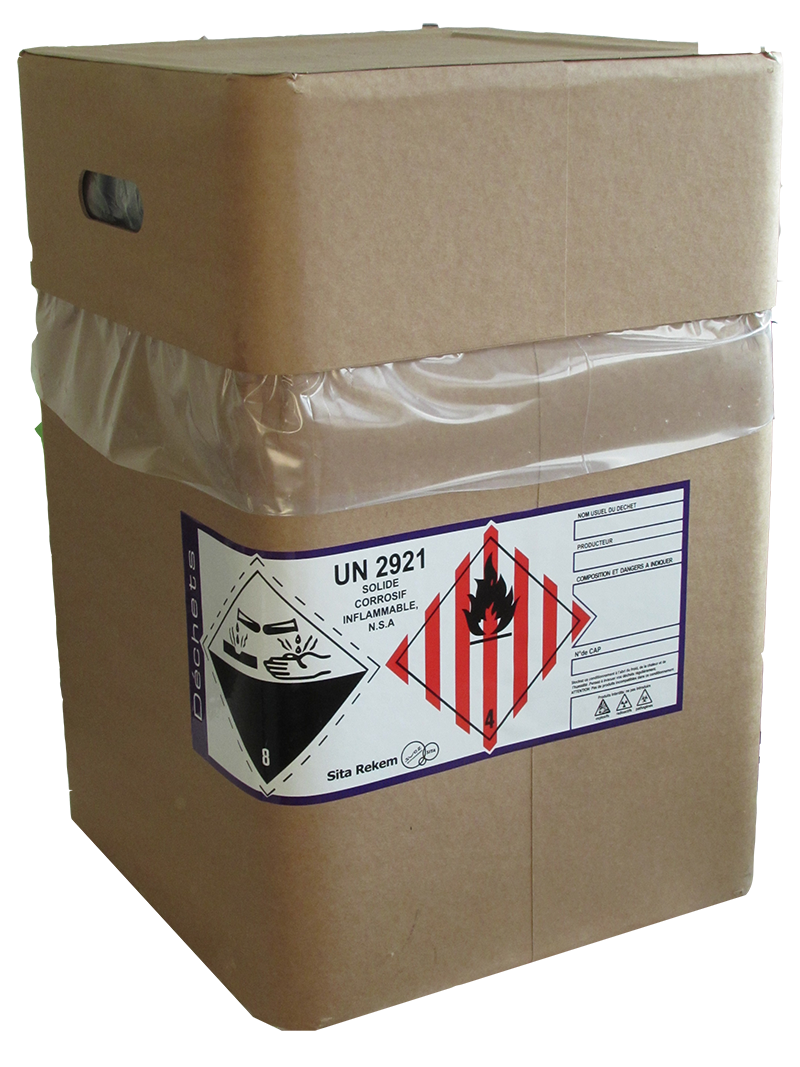
What I must put into the container:
Unsoiled gloves
Unsoiled paper towels
What I can put into the container:
Unsoiled laboratory waste that is neither pointed nor sharp
Unsoiled plastic or glass waste (depending on the bin)
What I must not put into the container:
Soiled glass waste (Pasteur pipettes, broken glass)
Liquid waste or solid waste containing liquid
Waste not from the laboratory
Unsoiled gloves
Unsoiled paper towels
What I can put into the container:
Unsoiled laboratory waste that is neither pointed nor sharp
Unsoiled plastic or glass waste (depending on the bin)
What I must not put into the container:
Soiled glass waste (Pasteur pipettes, broken glass)
Liquid waste or solid waste containing liquid
Waste not from the laboratory
CHROMATOGRAPHY VIALS
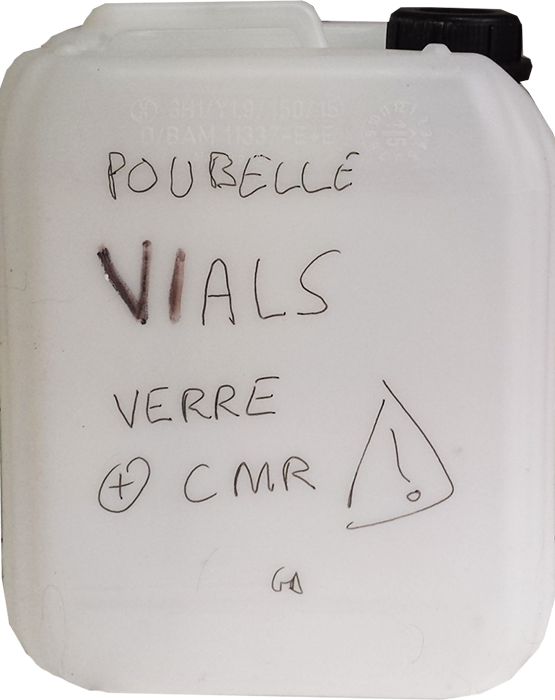
What I must put into the container:
Unemptied but closed chromatography vials
What I must not put into the container:
All other solid waste
Unemptied but closed chromatography vials
What I must not put into the container:
All other solid waste
OTHER UNSOILED WASTE
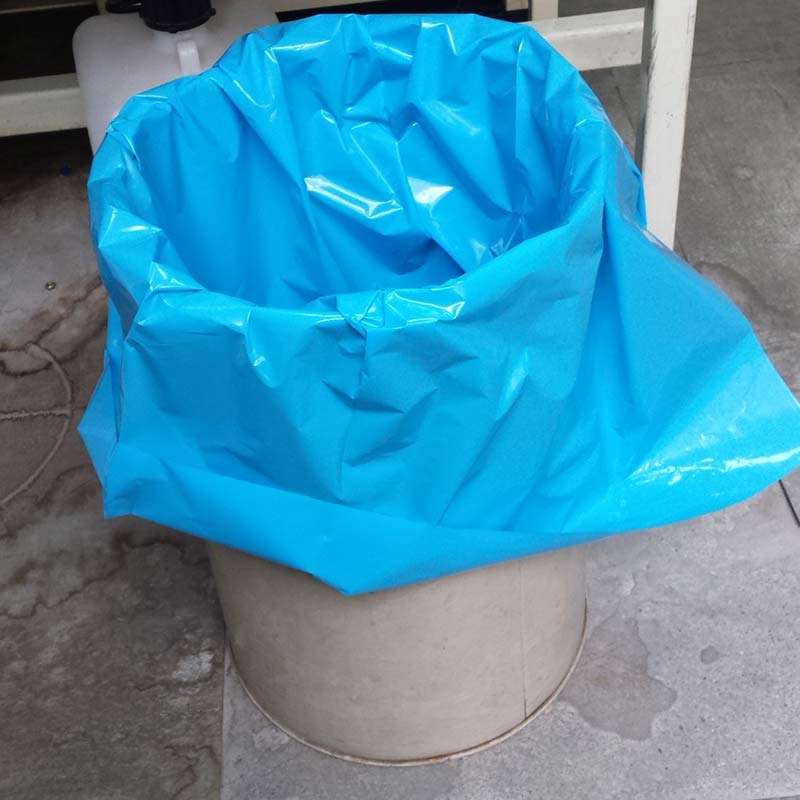
What I must put into the container:
Waste that is not from the laboratory (school supplies, chewing-gum, empty water bottles, etc.)
What I can put into the container:
Unsoiled waste that is neither pointed nor sharp
What I must not put into the container:
All soiled waste
All pointed or sharp waste
Waste that is not from the laboratory (school supplies, chewing-gum, empty water bottles, etc.)
What I can put into the container:
Unsoiled waste that is neither pointed nor sharp
What I must not put into the container:
All soiled waste
All pointed or sharp waste
As with liquid waste, the solid waste buckets should be left open for the shortest time possible to reduce exposure to hazardous substances. To this end, these instructions should be followed:
- Ensure that at least 2 benchtop bins are to hand to collect waste during experiments.1) Pointed and sharp soiled waste and 2) Other soiled waste;
- Do not Empty the benchtop bins until they are full or until the end of the session;
- Wherever possible, only open buckets under fume hoods to avoid inhaling residual vapors.
